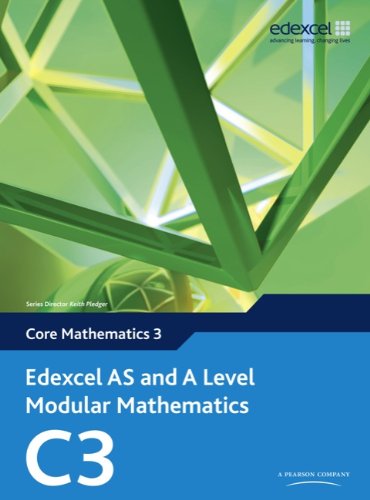

Most ebook files are in PDF format, so you can easily read them using various software such as Foxit Reader or directly on the Google Chrome browser.
Some ebook files are released by publishers in other formats such as .awz, .mobi, .epub, .fb2, etc. You may need to install specific software to read these formats on mobile/PC, such as Calibre.
Please read the tutorial at this link: https://ebookbell.com/faq
We offer FREE conversion to the popular formats you request; however, this may take some time. Therefore, right after payment, please email us, and we will try to provide the service as quickly as possible.
For some exceptional file formats or broken links (if any), please refrain from opening any disputes. Instead, email us first, and we will try to assist within a maximum of 6 hours.
EbookBell Team

5.0
68 reviews
ISBN 13: 9780435519094
Author: Keith Pledger
Edexcel AS and A Level Modular Mathematics Core Mathematics C3 eBook edition
Chapter 1: Algebraic fractions
1.1: Simplify algebraic fractions by cancelling common factors
1.2: Multiplying and dividing algebraic fractions
1.3: Adding and subtracting algebraic fractions
1.4: Dividing algebraic fractions and the remainder theorem
Summary of key points
Chapter 2: Functions
2.1: Mapping diagrams and graphs of operations
2.2: Functions and function notation
2.3: Range, mapping diagrams, graphs and definitions of functions
2.4: Using composite functions
2.5: Finding and using inverse functions
Summary of key points
Chapter 3: The exponential and log functions
3.1: Introducing exponential functions of the form y=ax
3.2: Graphs of exponential functions and modelling using y=ex
3.3: Using ex and the inverse of the exponential function logex
Summary of key points
Chapter 4: Numerical methods
4.1: Finding approximate roots of f(x)=0 graphically
4.2: Using iterative and algebraic methods to find approximate roots of f(x)=0
Summary of key points
Review Exercise 1
Chapter 5: Transforming graphs of functions
5.1: Sketching graphs of the modulus function y=|f(x)|
5.2: Sketching graphs of the function y=f(|x|)
5.3: Solving equations involving a modulus
5.4: Applying a combination of transformations to sketch curves
5.5: Sketching transformations and labelling the coordinates of given point
Summary of key points
Chapter 6: Trigonometry
6.1: The functions secant ϴ, cosecant ϴ, and cotangent ϴ
6.2: The graphs of secant ϴ, cosecant ϴ, and cotangent ϴ
6.3: Simplifying expressions, proving identities and solving equations using sec ϴ, cosec ϴ, and c
6.4: Using the identities 1+tan2ϴ=sec2ϴ and 1+cot2ϴ=cosec2ϴ
6.5: Using inverse trigonometrical functions and their graphs
Summary of key points
Chapter 7: Further trigonometric identities and their applications
7.1: Using addition trigonometrical formulae
7.2: Using double angle trigonometrical formulae
7.3: Solving equations and proving identities using double angle formulae
7.4: Using the form acosϴ+bsinϴ in solving trigonometrical problems
7.5: The factor formulae
Summary of key points
Chapter 8: Differentiation
8.1: Differentiating using the chain rule
8.2: Differentiating using the product rule
8.3: Differentiating using the quotient rule
8.4: Differentiating the exponential function
8.5: Finding the differential of the logarithmic function
8.6: Differentiating sin x
8.7: Differentiating cos x
8.8: Differentiating tan x
8.9: Differentiating further trigonometrical functions
8.10: Differentiating functions formed by combining trigonometrical, exponential, logarithmic and po
Summary of key points
Review Exercise 2
Practice paper
Examination style paper
Formulae you need to remember
List of symbols and notation
solutionbank s1 edexcel as and a level modular mathematics
edexcel as and a level modular mathematics
edexcel as and a level modular mathematics pdf
edexcel as and a level modular mathematics statistics 1 pdf
edexcel as and a level modular mathematics statistics 1
edexcel as and a level modular mathematics c2
Tags: Keith Pledger, Edexcel, Modular